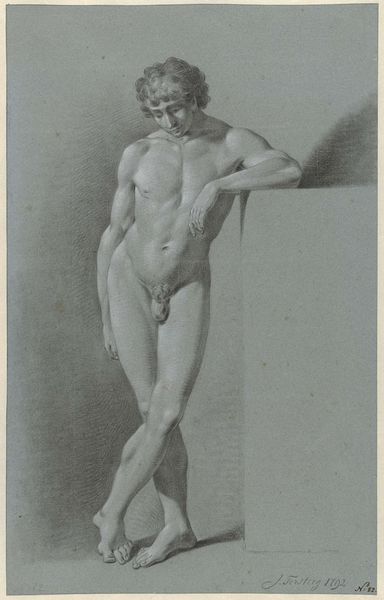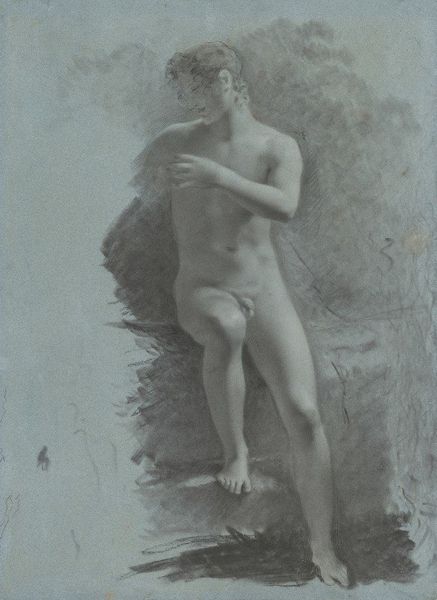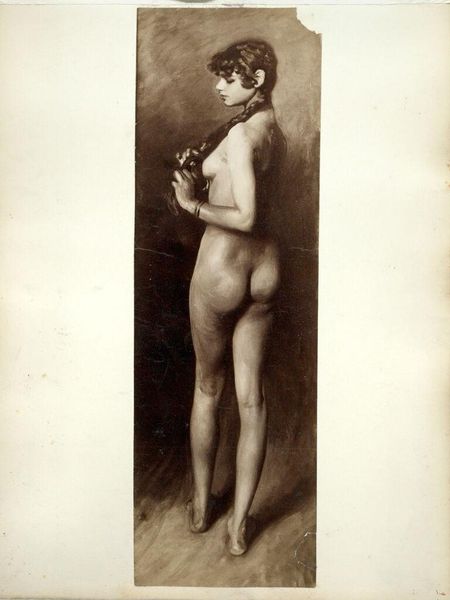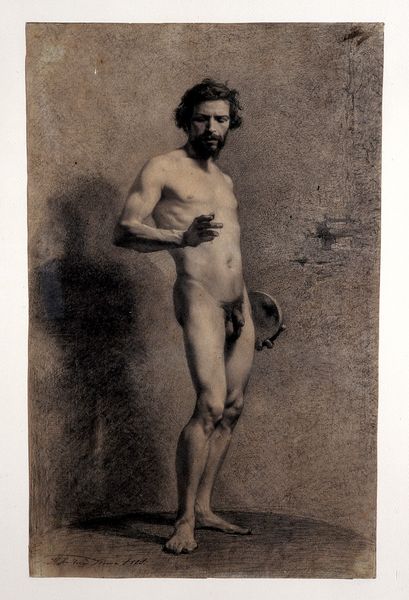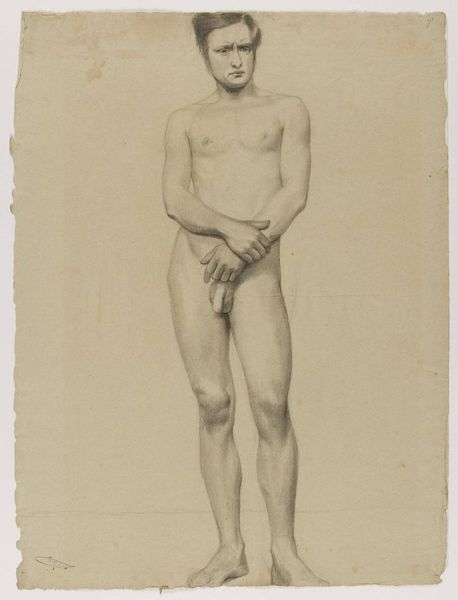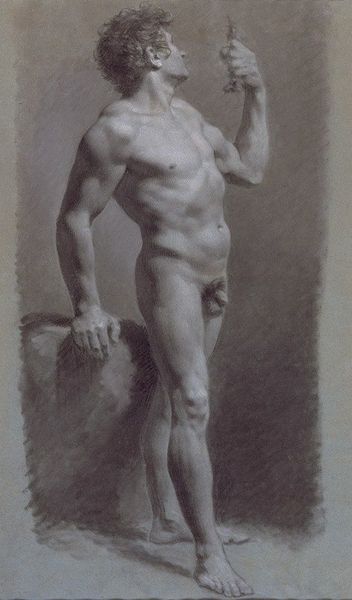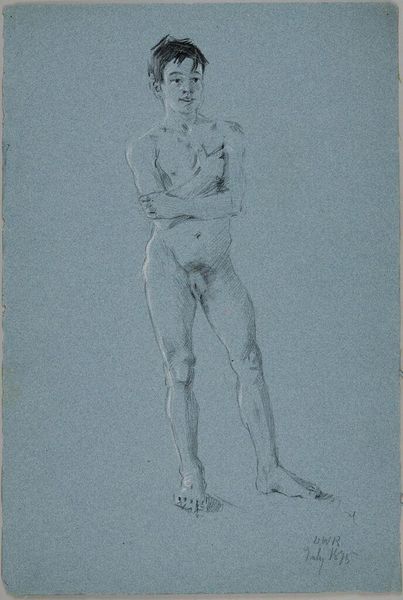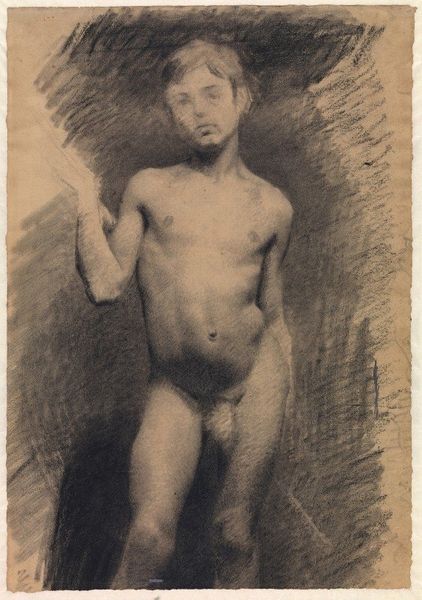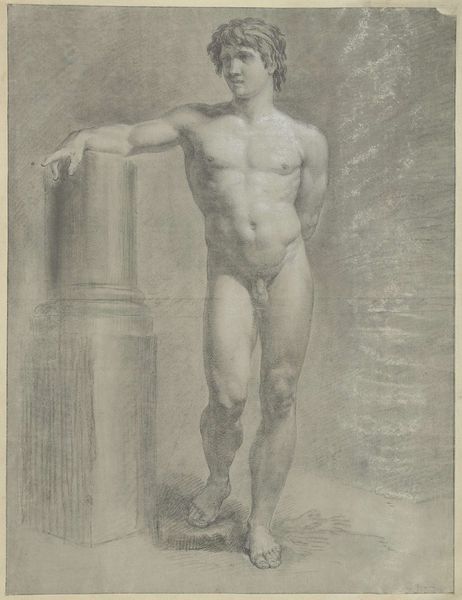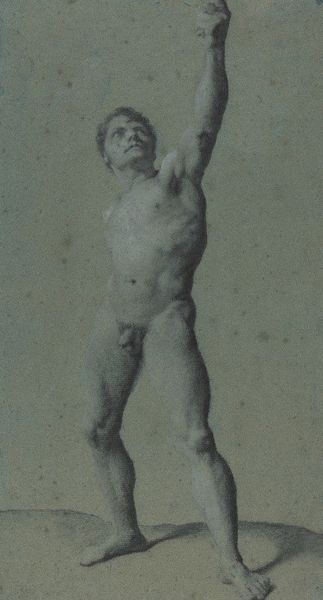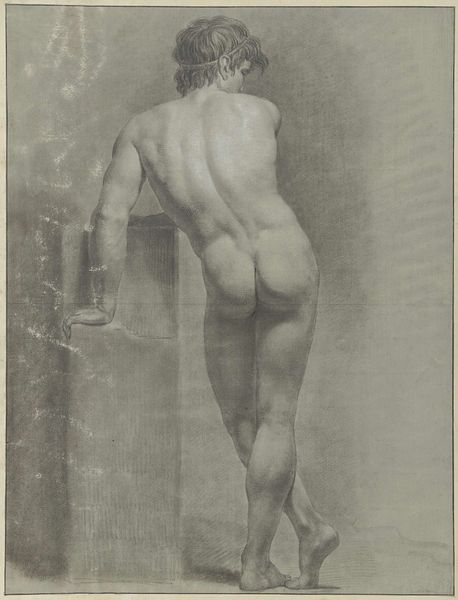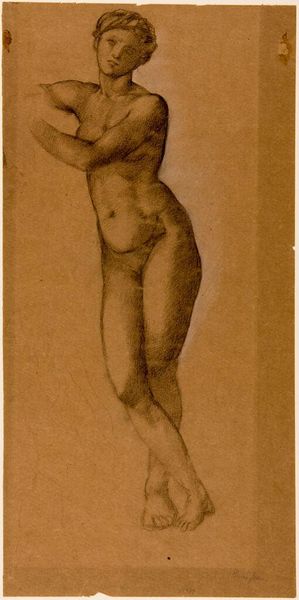
Copyright: Public domain
Curator: The work before us, "Nude front male with disc" created by Mariano Fortuny Marsal in 1861, utilizes charcoal to capture a striking full figure study. Editor: My first impression is the palpable tension in his stance. The slight contrapposto creates a sense of controlled energy, like he’s a coiled spring waiting to be released. The shading also contributes to this dramatic effect. Curator: Indeed, that tension is significant. Nude studies like this, particularly during the academic art period, were critical to represent ideal forms. It is no coincidence that he clutches that baton - not so much a sporting item, but rather the ancient Greek discus - associating the athletic male with the glories of antiquity. It signifies a reach towards perfection. Editor: But how does the choice to render the figure nude, holding the "disc", intersect with broader discussions about the male gaze, especially in 19th-century European art? His expression seems detached. Is he performing an ideal for someone? Curator: It is interesting that the model is seemingly detached. This isn’t necessarily a sensual celebration of the body. Instead, his face suggests an internal preoccupation - the pursuit of intellectual or artistic fulfillment, a kind of melancholy perhaps indicative of the burdens that accompany beauty. It reminds me a little of images of Greek heroes searching or longing. Editor: The use of charcoal definitely lends an almost ghostly, ethereal quality to his physique. In examining such a powerful, dominating pose it makes one question whether we consider its potential implications within gender power dynamics throughout history. Are we, even now, buying into a specific vision of masculinity? Curator: I am fascinated that the cultural memory of this image, the hero-athlete as both beautiful and emotionally complicated, persists despite shifting social landscapes. The charcoal medium adds to the romantic sensibility, yet this is also very realistic in capturing musculature, down to small skin imperfections. The symbol has staying power even if the interpretation shifts across different eyes and times. Editor: This drawing leaves me thinking about how art perpetuates ideals and ideologies and how it has helped inform power relationships, and whether that is even possible to completely change. The subtle rebellion could be through questioning itself - art that is simultaneously classical yet also somewhat 'modern'. Curator: For me, it’s a reminder of the enduring power of symbols, and how they continue to resonate and trigger unexpected emotional responses. This is despite being created within a specific historical context that is not the viewer's.
Comments
No comments
Be the first to comment and join the conversation on the ultimate creative platform.
